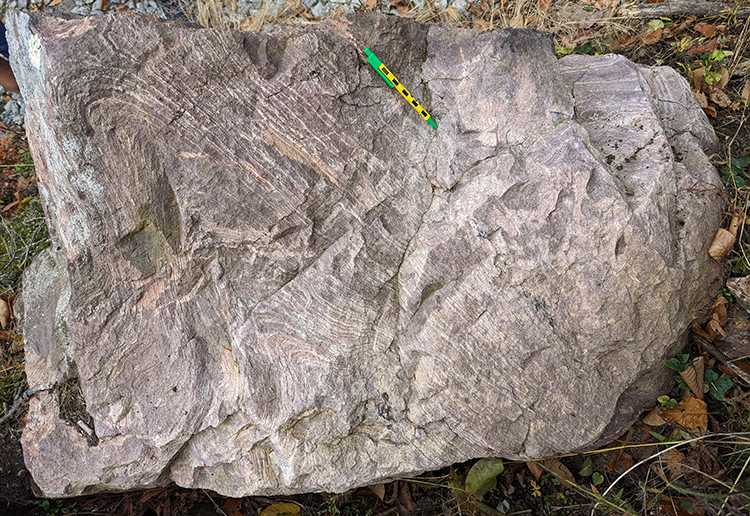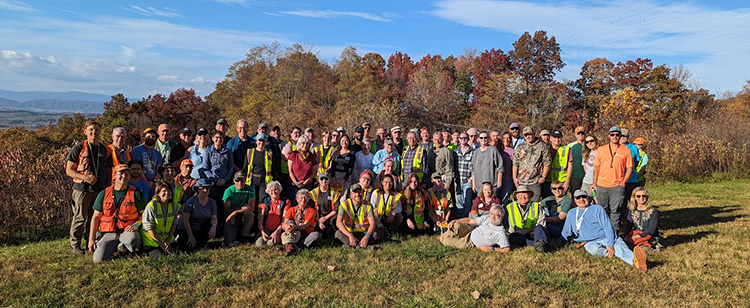Happy Friday!
Here’s a cool rock I saw last weekend on the 2023 Virginia Geological Field Conference. This is a flow-banded rhyolite from the Mount Rogers area of Virginia (near the North Carolina border in the highest part of the Blue Ridge province). The folding you see here is probably primary (lava flow dynamics) rather than tectonic (deformation associated with Appalachian mountain building).
This particular block was in an intriguing position – surrounded by laminated sedimentary layers (some with dropstones) of the Neoproterozoic Konnarock Formation. If that positioning is itself conformable and primary, then the age of this rhyolite constrains the age of the Konnarock Formation’s deposition, an interpretation that was argued in an exciting 2020 Science paper by Scott MacLennan and others. The exact relationship of this rhyolite to the Konnarock is the key to their conclusion that there was glaciation in the Mount Rogers area tens of millions of years prior to the first Snowball Earth, and thus global climate was already cold prior to the onset of the planetary-scale “Snowball.” However, having now visited the site in person, I was sad that the exact contact between the two was not especially well exposed. There’s an interval of shrubs and bushes that obscures the exact relationship between the two units. I think it’s still plausible that this rhyolite may have been a nubbin of bedrock poking up into the lake which deposited the Konnarock, and therefore its 751 Ma age is an age for the rocks underlying the Konnarock instead: this would mean the Konnarock is indeed a Snowball Earth deposit (though a lacustrine one rather than marine — with no cap carbonate). (There’s also a possibility that Alleghanian-age faults have shuffled the stratigraphic deck here a bit, placing older rhyolite atop younger glaciogenic sediments.)
Anyhow – great rocks, beautiful and intriguing. The VGFC was fortunate to enjoy glorious weather. A good time was had by all.


